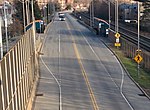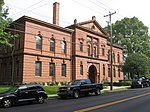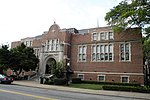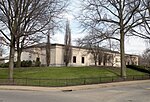Archives Service Center
Digital library projectsHistory of labor relations in the United StatesMusic librariesMusic organizations based in the United StatesOnline archives of the United States ... and 4 more
Online music and lyrics databasesPittsburghPolitical history of the United StatesUniversity of Pittsburgh

The Archives Service Center (ASC) is one of the main repositories within the University Library System at the University of Pittsburgh and houses collections of various manuscripts, media, maps, and other materials of historical, social and scientific content. It houses and functions as the repository for collections that document and describe the history of the Western Pennsylvania region, Allegheny County, Pennsylvania, the city of Pittsburgh, and the University of Pittsburgh.
Excerpt from the Wikipedia article Archives Service Center (License: CC BY-SA 3.0, Authors, Images).Archives Service Center
Thomas Boulevard, Pittsburgh
Geographical coordinates (GPS) Address Nearby Places Show on map
Geographical coordinates (GPS)
| Latitude | Longitude |
|---|---|
| N 40.4499 ° | E -79.8952 ° |
Address
University of Pittsburgh Library Annex and Surplus Property
Thomas Boulevard 7500
15206 Pittsburgh
Pennsylvania, United States
Open on Google Maps








